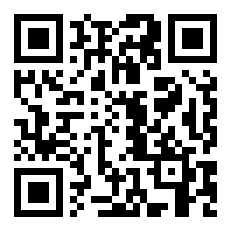About Us
Location: The zoo is located in Folsom City Park at Natoma and Stafford Streets at 403, Stafford Street, Folsom, CA 95630
From 50 take Folsom Blvd Exit. Turn left onto Folsom Blvd. Follow for about 3 miles and turn right at lights onto Natoma Street. Follow for half mile turn left onto Stafford Street. Take first right into parking lot. Zoo is located adjacent to the parking lot.
From 80 take Eureka exit. Follow for one mile and turn left onto Douglas Blvd. Follow for 2-3 miles, turn right onto Folsom/Auburn Road. Follow for 3-4 miles going over new Folsom bridge. Turn left at lights onto Natoma Street. Follow for half mile turn left onto Stafford Street. Take first right into parking lot. Zoo is located adjacent to the parking lot.
For more directions, call (916) 351-3527. This may be a recording if you are calling out of hours.
Gift Shop: Located inside the zoo. Featuring a wide variety of unique gift items for all ages, clothing, toys, jewelry and more!
Tuesday through Sunday 10.30am - 3.30pm
Winter Hours (Nov 1 - Feb 29) 11.00am - 2.30pm
Gift Shop Phone: 916.351.3338
All About The Folsom Zoo
Since 1963, this small unique California zoo has been providing sanctuary to some very special animals. All are non-releasable. Many were raised, and rejected, as wild pets. Others were injured or orphaned in the wild. Most are native to North America. All have names and personalities, and their individual stories are posted at the exhibits, along with factual, up-to-date information about their species.The distinctive educational focus of the zoo promotes responsible and appropriate behavior toward all animals. The zoo teaches about common and uncommon animals, both wild and domestic, and includes those in between, like feral pigs and wolf-dog hybrids. Zoo programs stress that wild animals don’t make good pets.
This is not a "mainstream" zoo. Rather, it is a sanctuary in management and philosophy, except that it is open to the public, for a fee, six days a week. Animals live out their lives here. People who "don't like zoos" are generally comfortable here.
Our primary goal is teaching responsible behavior toward all animals. The zoo/sanctuary is not American Zoo and Aquarium accredited because the AZA code of ethics is not in keeping with our own (we don't breed, sell or trade animals.) The zoo is never troubled by animal rights people because we have a mission statement and supporting principles that ensures animals always come first, and are treated as individuals. Actually, we are the champion and darling of some animal rights folks.This zoo features temporary public service informational exhibits. Currently we have one Premarin foal. Foals are little known by-products of the estrogen replacement therapy derived from pregnant mare urine. In the past, we have exhibited mustangs in conjunction with the controversial Bureau of Land Management adoption program; longhorn cattle for their historical significance as well as their more recent significance as lean beef animals which are gentler to public range lands than most modern breeds; and livestock guarding dogs with a flock of sheep. Black Bear Fisher works in conjunction with The National Park Service (out of Yosemite) to test prototpye "bear-proof" food containers for backcountry use. He has sent numerous designs back to the drawing board. Fisher has also had design input on "bear-proof" food lockers and trash receptacles. His work helps the zoo and the National Park Service keep wild bears in the wild.
The Folsom City Zoo Sanctuary is a proud member of the Captive Wild Animal Protection Coalition. The Captive Wild Animal Protection Coalition (CWAPC), a consortium of zoo professionals, sanctuary operators, and animal protection groups, believes the practice of keeping wild animals as pets is both dangerous for people and inhumane for animals. The purpose of the Coalition is to research and analyze the issues of supply and demand for captive wild animals and to develop, implement and coordinate multiple strategies to significantly reduce the trade, use and possession of captive wild animals as pets. Our goal is to significantly reduce the availability, volume and presence of dangerous wild animals as pets.
